The Well-Tempered Ear
The 10th annual Baroque Holiday Concert by the Madison Bach Musicians is next Saturday night and will be virtual and online
Leave a Comment
PLEASE HELP THE EAR. IF YOU LIKE A CERTAIN BLOG POST, SPREAD THE WORD. FORWARD A LINK TO IT OR, SHARE IT or TAG IT (not just “Like” it) ON FACEBOOK. Performers can use the extra exposure to draw potential audience members to an event. And you might even attract new readers and subscribers to the blog.
By Jacob Stockinger
On this coming Saturday night, Dec. 12, the Madison Bach Musicians will present their 10th annual Baroque Holiday Concert (below is a photo of a previous year’s holiday concert).
Because of the coronavirus pandemic, this year’s one-hour concert will be a virtual web event.
The program features Baroque masterworks by Johann Sebastian Bach, Georg Philipp Telemann, Arcangelo Corelli, Joseph Dall’Abaco, Jean Daniel Braun and Marc-Antoine Charpentier. It was recorded Dec. 1-6 in several acoustically superior venues.
Links to the MBM holiday program can be purchased at $15 per household at https://madisonbachmusicians.org. Patrons purchasing the link can view the program the evening of Dec. 12 and anytime afterward through Friday, Dec. 26.
Festivities begin at 7:30 p.m. with MBM director Trevor Stephenson’s 30-minute pre-concert lecture about the repertoire, the composers and the period instruments.
At 8 p.m., viewers will see the 60-minute, high-definition video of the concert portion of the program, followed by a 30-minute Zoom Q&A session with the musicians from their homes. Questions for the Zoom session should be submitted by email to MBM manager Karen Rebholz at madisonbachmusicians.manager@gmail.com.
The concert begins with a selection of nine pieces from the Schemelli Songbook. Georg Schemelli collaborated with Johann Sebastian Bach (below, 1685-1750) in assembling this magnificent collection of spiritual songs, published in Leipzig in 1736. Bach provided most of the bass lines and wonderful harmonizations.
Grammy Award-winning soprano Estelí Gomez and harpsichordist Trevor Stephenson (both below) perform this set in the beautiful chapel at Lawrence University in Appleton, Wis.
From the sanctuary of Grace Episcopal Church, on the Capitol Square in downtown Madison, baroque cellist James Waldo (below) will perform Bach’s magisterial Solo Cello Suite No. 4 in E-flat major.
UW-Madison Mead Witter School of Music bassoon faculty member Marc Vallon (below top, in a photo by James Gill) and esteemed baroque cellist Martha Vallon (below bottom) team up in the Collins Recital Hall of the UW”s Hamel Music Center for a Duo Sonata by Jean Daniel Braun (1703-1738).
Marc will also play a solo bassoon transcription of two Fantasias, originally for solo flute, by Telemann (1681-1767). Martha will perform the meditative Capriccio no. 4 in D minor by Dall’Abaco (1710-1805).
The program concludes at The Crossing in Madison with MBM concertmaster violinist Kangwon Kim (below top), violist Micah Behr (below bottom) and cellist James Waldo joining in a medley of holiday favorites.
They include Greensleeves variations over a ground (repeated bass line); three movements from Christmas Music for Instruments by Charpentier (1643-1704); the Adagio from the Christmas Concerto Op. 6, No. 8 by Corelli (1653-1713), which you can hear in the YouTube video at the bottom; and two beloved carols — Lo How a Rose and Sussex Carol – in arrangements by Micah Behr.
MBM wishes to thank Geneva Campus Church for their collaboration in filming this portion of the program as a contribution to their weekly services.
Tags: #AppletonWisconsin, #ArcangeloCorelli, #BaroqueBassoon, #BaroqueCello, #BaroqueFlute, #BaroqueMusic, #Baroquesinging, #BaroqueViola, #BaroqueViolin, #BassLines, #BassoonMusic, #BlogPost, #BlogPosting, #CapitolSquare, #ChamberMusic, #ChristianChurch, #ChristmasCarol, #ChristmasConcerto, #ChristmasMusic, #CityofMadison, #ClassicalMusician, #CollinsRecitalHall, #CoronavirusPandemic, #COVID-19, #DuoSonata, #EstelíGomez, #FacebookPost, #FacebookPosting, #GenevaCampusChurch, #GeorgPhilippTelemann, #GeorgSchemelli, #GraceEpiscopalChurch, #GrammyAward, #HamelMusicCenter, #HighDefinition, #HistoricallyInformedPerformancePractices, #HolidayConcert, #HolidayFavorites, #HomeWebsite, #JacobStockinger, #James Waldo, #JeanDanielBraun, #JesusChrist, #JohannSebastianBach, #JosephDell'Abaco, #KangwonKim, #KarenRebholz, #LawrenceUniversity, #LeipzigGermany, #LoHowaRose, #MadisonBachMusicians, #MadisonWisconsin, #Marc-AntoineCharpentier, #MarcVallon, #MarthaVallon, #MeadWitterSchoolofMusic, #MicahBehr, #Musicfaculty, #OnlineConcert, #PeriodInstruments, #Pre-concertLecture, #RecordedMusic, #SocialDistance, #SociallyDistanced, #SoloCelloSuite, #SpecialCollection, #SpiritualMusic, #SussexCarol, #TheCrossing, #TheEar, #ThemeAndVariations, #TheUW, #TrevorStephenson, #UniversityofWisconsin-Madison, #VirtualConcert, #VocalMusic, #YouTubevideo, #ZoomMeeting, acoustics, Appleton, Arcangelo Corelli, Arts, assemble, assembling, audience, Bach, Baroque, Baroque cello, Baroque music, bass, bass lines, Bassoon, blog, Braun, Campus, Capitol Square, Capriccio, Carol, cellist, Cello, Chamber music, chapel, Charpentier, Christ, Christian, Christian church, Christmas, church, Classical music, classical musician, classicalmusic, collaborate, collection, Collins Recital Hall, composer, Concert, concertmaster, concerto, conclude, contribution, Corelli, coronavirus, December, director, downtown, duo sonata, Early music, earlymusic, Estelí Gomez, evening, event, Facebook, Facebook post, Facebook posting, Fantasia, festivities, film, filming, flute, forward, Geneva Campus Church, Georg Philipp Telemann, George Schemelli, Grace Episcopal Church, Grammy Award, Greensleeves, ground, Hamel Music Center, harmonization, harpsichord, harpsichordist, High definition, historically informed performance practices, holiday concert, holiday favorites, Home, home website, hour, Jacob Stockinger, Jean Daniel Braun, Jesus, Johann Sebastian Bach, Joseph Dall'Abaco, Kangwoo Kim, Karen Rebholz, Lawrence University, Leipzig, like, link, Lo How a Rose, Madison, Madison Bach Musicians, magisterial, magnificent, Marc Vallon, Marc-Antoine Charpentier, Martha Vallon, mask, Masterworks, Mead Witter School of Music, meditative, medley, Micah Behr, movement, Music, music faculty, online, pandemic, patrons, perform, period instruments, photo, piece, pieces, play, portion, post, posting, pre-concert, previous, professor, program, publish, published, purchase, Q&A, question-and-answer, questions, recorded, recorded music, sanctuary, services, set, share, Singing, social distance, socially distanced, solo, solo cello suite, Sonata, song, songbook, soprano, spiritual, submit, Superior, Sussex Carol, tag, technology, Telemann, The Crossing, The Ear, theme and variations, tickets, transcription, Trevor Stephenson, United States, University of Wisconsin-Madison School of Music, University of Wisconsin–Madison, UW, UW-Madison, venues, view, viewer, Viola, Violin, violinist, virtual, vocal music, web, Website, weekly, Wisconsin, wonderful, year, YouTube, Zoom
Classical music: The Madison Bach Musicians will perform its ninth annual Baroque Holiday Concert this coming Saturday night
Leave a Comment
PLEASE HELP THE EAR. IF YOU LIKE A CERTAIN BLOG POST, SPREAD THE WORD. FORWARD A LINK TO IT OR, SHARE IT or TAG IT (not just “Like” it) ON FACEBOOK. Performers can use the extra exposure to draw potential audience members to an event. And you might even attract new readers and subscribers to the blog.
By Jacob Stockinger
On this coming Saturday night, Dec. 7, the Madison Bach Musicians will present its ninth annual Baroque Holiday Concert (below, in 2014, in a photo by Kent Sweitzer).
The concert, using period instruments and historically informed performance practices, is again at the First Congregational United Church of Christ, 1609 University Ave., near Camp Randall Stadium. A pre-concert lecture by MBM founder and director Trevor Stephenson is at 7:15 p.m. followed by the concert at 8 p.m.
Advance-sale tickets are $35 at Orange Tree Imports and the Willy St. Co-op (East and West). Online advance-sale tickets are available at https://madisonbachmusicians.org. Tickets at the door at $38 for general admission and $35 for seniors. Student Rush tickets are $10 at the door and go on sale 30 minutes before the lecture.
The program features masterworks by Bach, Handel, Purcell and Torelli which, in their appealing Baroque way, explore the fusion of celebration, reflection and ultimate renewal often felt as the year’s end approaches.
MBM welcomes baroque trumpet virtuoso Kathryn Adduci (below), who will show how wonderfully vintage brass resounds in the magnificent Old World acoustics of the church.
Other performers are: Ariadne Lih, soprano (below); Lindsey Meekhof, alto; Ryan Townsend Strand, tenor; Michael Hawes, bass; Christine Hauptly Annin and Nathan Giglierano, violins; Micah Behr, viola; James Waldo, cello; and Trevor Stephenson, harpsichord.
Here are a couple of fun facts, provided by Stephenson, about each piece on the program.
Sound the Trumpet, by Henry Purcell (1659−1695, below)
1. This piece was composed in 1694, the year before Purcell died at the age of just 36. It is part of a birthday ode — Come Ye Sons of Art, Away! — for Queen Mary II of England, wife of King James II.
2. There is no trumpet in it at all, but the two voices implore the trumpet to play and they emulate trumpet-style writing with long, swelling notes mixed in with brilliant decorative flourishes.
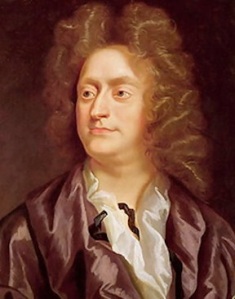
Trumpet Concert in D major by Giuseppe Torelli (1658−1709, below)
1. Torelli was one of the most prolific trumpet composers of all time.
2. The baroque trumpet has no valves and is designed to play in one tonality at a time. Favorite baroque keys were D major and C major.
Comfort Ye and Every Valley from Messiah, by George Frideric Handel (1685−1759, below)
1. After the instrumental Overture to Messiah, this Recitative and Aria are the work’s first sung pieces.
2. Handel was 56 years old when he composed Messiah in 1741 in London; the work was premiered, however, in Dublin in 1742, much to the chagrin of Handel’s librettist Charles Jennens.
Cantata BWV 51, Jauchzet Gott in allen Landen (Exult in God in Every Land), by Johann Sebastian Bach (1685−1750, below)
1. Composed around 1730, this is one of the very few Bach cantatas requiring only one singer.
2. In Bach’s Leipzig church, where the work was probably first heard, the soloist would have been either a male falsettist (or castrato) or an exceptionally skilled boy soprano.
Contrapunctus XIX and Vor deinen Thron tret ich hiermit (Before Thy throne I stand), from The Art of Fugue, BWV 1080, by J.S. Bach
1. According to Bach’s son Carl Philipp Emanuel (CPE), this fugue is the last piece his father wrote — though scholars hotly contest this claim.
2. In measure 195, Bach’s own name appears suddenly as a musical motive: B (B-flat in the German scale) – A – C – H (B natural) and the fugue has no ending but simply trails off in measure 239.
Grosser Herr, o starker König (Great Lord, O Powerful King) from Christmas Oratorio,BWV 248, by J.S. Bach
1. It features dance-like melodic figures in dialogue between trumpet and solo bass voice. (Heard in the YouTube video at the bottom.)
2. Text celebrates the birth of the savior, which makes the powers of the Earth irrelevant.
Cantata BWV 196, Der Herr denket an uns (The Lord thinks of us),by J.S. Bach
1. With its textual focus on blessings (from Psalm 115), the work is likely a wedding cantata.
2. Written probably when Bach was only 22 years old, the work is absolutely perfect in its structure and easy concision; its high-energy but quiet final cadence has a curiously modern, neo-Classical charm that might have made Stravinsky smile.
Chorale: Wohl mir, dass ich Jesum habe (What joy for me that I have Jesus),from Cantata, BWV 147, Herz und Mund und Tat und Leben (Heart and Mouth and Deed and Life), by J.S. Bach
1. The famous opening figure in the strings is really just Bach’s ingenious obligato lead-in to a chorale tune that parishioners in his church would have instantly recognized.
2. This work has enjoyed tremendous popularity as “Jesu, Joy of Man’s Desiring” since it was arranged for one and then two pianos in 1926 and 1934 respectively by English pianist Myra Hess. It has since been arranged for myriad combinations of instruments and voices.
Tags: #AltoSinger, #AriadneLih, #ArtofFugue, #BachCantata, #BaroqueMusic, #BaroqueOratorio, #BassSinger, #BlogPost, #BlogPosting, #BoySoprano, #BrassMusic, #CampRandall, #CampRandallStadium, #CarlPhilippEmanuelBach, #CharlesJennens, #CharlesJennins, #ChoralMusic, #ChristianChurch, #ChristianReligion, #ChristmasHoliday, #ChristmasOratorio, #CPEBach, #DublinIreland, #FacebookPost, #FacebookPosting, #FirstCongregationalUnitedChurchofChrist, #FourSeasonsofBuenosAires, #GeorgeFridericHandel, #GermanComposer, #GermanLanguage, #GiuseppeTorelli, #GuestArtist, #HenryPurcell, #HistoricallyInformedPerformancePractices, #HolidayConcert, #HolidayMusic, #HolidaySeason, #IgorStravinsky, #InstrumentalMusic, #italianComposer, #James Waldo, #JamesGiles, #JamesWaldo, #JesuJoyofMan'sDesiring, #JesusChrist, #JohannSebastianBach, #KathrynAdduci, #KingJames, #KingofEngland, #LeipzigGermany, #LondonEngland, #MadisonBaroqueMusicians, #MeadWitterSchoolofMusic, #MicahBehr, #MyraHess, #NathanGiglierano, #OldWorld, #PeriodInstruments, #QueenMary, #SeniorCitizen, #SopranoSinger, #TenorSinger, #TheEar, #TheLord, #TrevorStephenson, #TrumpetConcerto, #TrumpetMusic, #UniversityofWisconsin-Madison, #VocalMusic, #WillySt.Coop, #WillySt.CoopWest, #WillyStreetCo-op, #WillyStreetCoopEast, #YouTubevideo, acoustics, alto, appealing, aria, Ariadne Lih, arrangement, Art of Fugue, Arts, Bach, Bach cantata, Baroque, Baroque music, bass, biirth, birthday, blog, boy, boy soprano, brass, brass music, brilliant, British, Camp Randall, Camp Randall Stadium, Cantata, Carl Philipp Emanuel Bach, castrato, celebration, cellist, Cello, Charles Jennens, charm, choral music, Chorale, Christ, Christmas, Christmas Oratorio, church, claim, Classical music, composer, Concert, concerto, concise, conductor, contest, counterpoint, CPE Bach, decorative, deed, dialogue, director, Dublin, Early music, Earth, east, end, ending, energy, England, English, explore, Facebook, fact, falsetto, father, figure, First Congregational United Church of Christ, flourishes, forward, founder, fugue, fusion, George Frideric Handel, German, Giuseppe Torelli, God, guest artist, Handel, harpsichord, heart, Henry Purcell, historically informed performance practices, Holiday, holiday concert, Igor Stravinsky, ingenious, instrument, instrumental, instruments, Italian, Italy, J.S. Bach, Jacob Stockinger, James, Jesu Joy of Man's Desiring, Jesus Christ, Johann Sebastian Bach, Kathryn Adduci, key, keys, King, last, lecture, Leipzig, librettist, life, like, link, London, long, Lord, Madison, Madison Baroque Musicians, magnificent, male, Mary, masterwork, Mead Witter School of Music, Messiah, Micah Behr, modern, motive, mouth, Music, musical, Myra Hess, Nathan Giglierano, neo-Classical, notes, ode, Old World, online, opening, oratorio, Orchestra, Overture, parishioners, perfect, period instruments, Pianist, Piano, Pianos, play, popularity, post, posting, premiere, program, prolific, queen, Queen Mary, recitative, reflection, Religion, renewal, resound, rush, savior, scholar, Season, senior, senior citizen, share, singer, skill, smile, solo, soloist, son, soprano, Sound, Stravinsky, structure, Student, swelling, tag, tenor, text, The Ear, throne, ticket, tonality, Torelli, Trevor Stephenson, Trumpet, trumpet concerto, tune, United States, University of Wisconsin-Madison School of Music, University of Wisconsin–Madison, UW-Madison, valve, valveless, vintage, Viola, Violin, violinist, violist, virtuoso, vocal music, voice, websote, wedding, west, Willy Street Co-op, Willy Street Coop, Willy Street Coop East, Willy Street Coop West, Wisconsin, wrote, year, YouTube
Classical music: How did Baroque composer Telemann get overshadowed and why is he being rediscovered? Trevor Stephenson talks about his all-Telemann concerts this weekend
2 Comments
IF YOU LIKE A CERTAIN BLOG POST, PLEASE SPREAD THE WORD. FORWARD A LINK TO IT OR, SHARE IT or TAG IT (not just “Like” it) ON FACEBOOK. Performers can use the extra exposure to draw potential audience members to an event. And you might even attract new readers and subscribers to the blog.
By Jacob Stockinger
This weekend, the Madison Bach Musicians (MBM) will give two performances of a concert devoted exclusively to the music of Baroque composer Georg Philip Telemann (below).
The performances are: Saturday night, Oct. 5, at 8 p.m. in the Atrium Auditorium of the First Unitarian Society of Madison, 900 University Bay Drive, where MBM will be artists-in-residence this season; the second performance is on Sunday afternoon, Oct. 6, at 3:30 p.m. at the Holy Wisdom Monastery, 4200 County Road M, in Middleton.
Tickets are $35 in advance and are available at the Willy Street Coop East and West, and at Orange Tree Imports. Tickets at the door are $38 for the general public; $35 for seniors; and $10 for student rush tickets that go on sale 30 minutes before each lecture. The lectures take place 45 minutes before the performance, at 7:15 p.m. and 2:45 p.m, respectively.
Why focus on the music of Georg Philipp Telemann (1681-1767)?
Trevor Stephenson, the founder and director of the Madison Bach Musicians, talks about it in an email Q&A with The Ear:
Why does Telemann, who was so respected in his day, seem to get far less play, fewer performances and less mentioning today than his contemporaries Bach, Vivaldi and Handel?
Telemann was born in 1681 — three years after Vivaldi and four years before Bach and Handel. He was astonishingly prolific and it is estimated that he wrote more than Bach and Handel combined.
On top of this, he was very highly respected and was widely published and performed during his life. Remember, it was Telemann — not Bach — whom the Leipzig council wanted to hire for the music director position in 1723. But Telemann was enjoying his wonderful new post in Hamburg—a thriving port city — and was not about to go back to landlocked Leipzig where he had spent his student days.
At any rate, after the 18th century had passed and its music became somewhat marginalized, in the early 19th century it was Bach’s music, not Telemann’s, that suddenly re-emerged.
Bach’s tremendous emotional depth, contrapuntal mastery and ability to control large-scale forms in an almost heroic way spoke with greater urgency to the Romantic sensibility than did Telemann’s elegant craftsmanship. Indeed, 19th-century Bach scholars often mean-spiritedly used Telemann as a foil for Bach.
Telemann’s music nevertheless received a modicum of performances in the early 20th century, but in the 1980s and 1990s, as the Early Music movement really got rolling—and the level of period-instrument performance increased—it became apparent that Telemann’s music really was hot stuff!
Now his music is enjoying a wonderful and well-deserved revival.
What are the appealing and admirable qualities you see in Telemann’s music? Are there any drawbacks to his compositions?
Telemann had a wonderful sense of melodic invention — probably music’s analog to an artist’s ability to draw — and his tunes seem to flow out effortlessly. And although his output was opulent, he had an uncanny sense of form and how much weight – duration — any given musical scene could bear.
He also was a masterful musical polyglot, able to jump back and forth easily between Italian, French and German musical idioms; and like Bach, he was also adept at integrating them into a unified style—this integration of national styles was a frequently acknowledged goal of 18th-century composers.
Telemann’s limitations are apparent when he is juxtaposed with Handel, who could dramatically really take the roof off and who could also find the inner essence of the human voice, and Bach who, like Shakespeare, through a near alchemy of sound and meaning could consistently define and further what it means to be human.
How and why did you put this program together? What unifies it and what would you like the public to know about it?
Madison Bach Musicians’ concertmaster and assistant artistic director Kangwon Kim (below left with Emily Dupere) did the heavy lifting in putting together this wonderful program of Telemann’s chamber music. MBM will present three of Telemann’s programmatic or story works, one church cantata and three purely instrumental selections.
With narration and graphics, we’ll walk you through how he cleverly depicts scenes from Swift’s Gulliver’s Travels (1726, below), which had been in print only two years when Telemann wrote his topical Gulliver Suite in 1728. Telemann loved ludicrous irony, like the tiny Lilliputians dancing a heavy chaconne—which Telemann notates in a hilarious, confounding mass of 64th and 128th notes. And then there’s the Brobdingnagian giants doing their rendition of a light-footed gigue, rendered in loopy, cumbersome whole notes!
We’ll also present the marvelous Suite Burlesque based upon Cervantes’ Don Quixote (below): Quixote’s love for Dulcinea, his jousting with windmills, and how a crowd mocks Quixote’s faithful, world-weary servant Sancho Panza.
To top it off, guest artist mezzo-soprano Clara Osowski (below) will sing the droll and sweetly amusing cantata about the demise — brought about by the cat! — of a favorite and very artistic canary. Osowski will also sing the church cantata Weicht, ihr Sünden, bleibt dahinten (Yield, You Sins, and Stay Behind Me). Telemann wrote more than 1,000 church cantatas.
The concert includes non-programmatic works for string band: the dramatic and Corelli-esque Sonata à 6 in F minor for two violins, two violas, cello and continuo; and the sparkling Sinfonia Spirituosa (heard in the YouTube video at the bottom). I will also perform some fascinating Fantasy miniatures for solo harpsichord, and will give a pre-concert lecture at both events.
For more information about the program, the performers and tickets, go to: www.madisonbachmusicians.org
Tags: #18thCentury, #19thCentury, #20thCentury, #AntonioVivaldi, #ArcangeloCorelli, #AtriumAuditorium, #BaroqueComposer, #BaroqueContinuo, #BaroqueMusic, #BlogInterview, #BlogPost, #BlogPosting, #CelloMusic, #ChamberMusic, #ChristianChurch, #ClaraOsowski, #ClassicalMusician, #ContrapuntalMusic, #DonQuixote, #EarlyMusicMovement, #FacebookPost, #FacebookPosting, #FirstUnitarianSocietyofMadison, #GeorgeFridericHandel, #GeorgPhilippTelemann, #GuestArtist, #Gulliver'sTravels, #HamburgGermany, #HarpsichordMusic, #HeavyLifting, #HolyWisdomMonastery, #HotStuff, #HumanVoice, #InstrumentalMusic, #JohannSebastianBach, #JonathanSwift, #KangwonKim, #Large-scale, #LeipzigGermany, #MadisonBachMusicians, #Mezzo-sopranoSinger, #MigueldeCervantes, #MusicalStyle, #MusicDirector, #OrangeTreeImports, #PeriodInstrument, #PortCity, #Pre-concertLecture, #RomanticMusic, #SacredCantata, #SacredMusic, #SanchoPanza, #SaturdayNight, #SeniorCitizen, #StringMusic, #Sundayafternoon, #ViolaMusic, #ViolinMusic, #VocalMusic, #WholeNotes, #WilliamShakepseare, #WillyStreetCoop, #WillyStreetCoopEast, #WillyStreetCoopWest, 18th century, 19th century, 20th-century, ability, afternoon, alchemy, analog, analogue, Antonio Vivaldi, Arcangelo Corelli, artist, artist-in-residence, Atrium Auditorium, Bach, band, Baroque, behind, blog, Burlesque, Cantata, cellist, Cello, chaconne, Chamber music, Christian, Christianity, church, Clara Osowski, Classical music, classicalmusic, composer, Concert, concertmaster, contemporary, continuo, contrapuntal, control, Corelli, council, counterpoint, craftsmanship, crowd, cumbersome, dance, dancing, days, depth, devoted, Don Quixote, draw, Dulcinea, Early music, elegant, email, emotional, enjoy, exclusive, Facebook, faithful, fantasy, fascinating, First Unitarian Society of Madison, form, forward, French, Georg Philipp Telemann, George Frideric Handel, German, giant, giants, gigue, goal, guest artist, Gulliver's Travels, Hamburg, Handel, harpsichord, heavy lifting, heroic, hire, Holy Wisdom Monastery, hot stuff, human voice, idiom, instrumental, interview, invention, irony, Italian, Johann Sebastian Bach, Jonathan Swift, jousting, Kangwon Kim, landlocked, lecture, Leipzig, like, Lilliputian, link, loopy, Love, ludicrous, Madison Bach Musicians, marginalized, marvelous, mastery, me, mean-spirit, meaning, melodic, melody, mention, Mezzo-soprano, Middleton, Miguel de Cervantes, miniature, movement, Music, Music director, musical, musical style, national, night, notes, opulent, Orange Tree Imports, output, performance, performer, period-instrument, play, polyglot, port city, position, post, posting, programmatic, prolific, public, pure, Q&A, rediscover, respect, revival, Romantic, sacred cantata, sacred music, Sancho Panza, Saturday night, scene, scholar, senior, sense, sensibility, servant, Shakespeare, share, sins, solo, Sonata, Sound, story, string, Student, style, subscriber, Suite, Sunday, tag, tickets, tiny, tune, tunes, uncanny, unified, urgency, use, Viola, Violin, violinist, violist, Vivaldi, vocal music, weight, well-deserved, whole, whole notes, Willy Street Coop, windmill, Wisconsin, wonderfu, world-weary, yield
Classical music: The Madison Symphony Orchestra opens its 94th season this weekend with the sonic sensuality of music by Wagner, Dvorak, Debussy and Barber
1 Comment
IF YOU LIKE A CERTAIN BLOG POST, PLEASE SPREAD THE WORD. FORWARD A LINK TO IT OR, SHARE IT or TAG IT (not just “Like” it) ON FACEBOOK. Performers can use the extra exposure to draw potential audience members to an event. And you might even attract new readers and subscribers to the blog.
By Jacob Stockinger
It has been warmer than the usual fall weather, so why not go sultry?
That’s what the Madison Symphony Orchestra (below, in a photo by Peter Rodgers) will do when it opens its 94th season this coming weekend.
The program “Love, Lust and Redemption” will combine the power of the Klais organ (below top) with MSO principal organist and curator of the Overture Concert Organ Greg Zelek who opens the season with Samuel Barber’s Toccata Festiva.
The all-orchestral program also features the Madison Symphony Orchestra exploring the sonic sensuality of Wagner’s “Tannhäuser”Overture, Debussy’s “Prelude to the Afternoon of a Faun” and Dvorak’s Symphony No. 7.
Performances will are in Overture Hall, 201 State Street, on Friday, Sept. 27, at 7:30 p.m.; Saturday, Sept. 28, at 8 p.m., and Sunday, Sept. 29, at 2:30 p.m.
Tickets are $19 to $95. For more information, see below.
MSO music director and conductor John DeMain (below) says of the program:
“Our opening concert is both festive and gorgeously romantic as we present our star organist Greg Zelek (below) in his MSO concerto debut.
“We open with one of the most beautiful overtures ever written, Wagner’s Overture to the opera Tannhäuser and then, after intermission, the great Symphony No. 7 in D Minor by Dvorak.
In between is the little jewel by Debussy, his quintessential impressionistic masterpiece, Prelude to the Afternoon of a Faun. All are favorites of mine, and I look forward to making them favorites of yours, if they aren’t already.”
“Tannhäuser: Overture and Venusberg Music” by Richard Wagner (below) is frequently performed as a separate work in orchestral concerts, the first such performance having been given by Felix Mendelssohn conducting the Leipzig Gewandhaus Orchestra in February 1846.
Wagner began revisions to the opera immediately, which resulted in two more versions: the Paris version in 1861 and the Vienna version in 1875. Members of the Madison Symphony Orchestra Chorus also perform in this piece.
TheToccata Festiva was written by the American composer Samuel Barber (below) as an occasional work for the Philadelphia Orchestra and Eugene Ormandy. It pairs organ and orchestra, and celebrated the inauguration of a new organ for the Academy of Music in Philadelphia, a gift from longtime patron Mary Curtis Zimbalist who had also commissioned the new piece.
Prelude to the Afternoon of a Faunby French composer Claude Debussy (below) is a musical evocation of Stephane Mallarmé’s poem “Prelude to the Afternoon of a Faun,” in which a faun — a half-man, half-goat creature of ancient Greek legend — awakes to revel in sensuous memories of forest nymphs. Debussy begins the piece with a sinuous and well-known flute melody evocative of a graceful female form.
Symphony No. 7 by Czech composer Antonin Dvorak was greatly influenced by Johannes Brahms. Dvorak decided to compose this symphony after hearing Brahms’s new Symphony No. 3.
The piece is distinguished for its somber and dramatic atmosphere and its lack of Slavic-inspired melodies, a characteristic with which the composer’s style is usually associated. (You can hear the vivacious Scherzo in the YouTube video at the bottom.)
TICKETS AND EVENT DETAILS
The lobby opens 90 minutes prior to each concert. One hour before each performance, Randal Swiggum (below) will lead a 30-minute Prelude Discussion in Overture Hall to enhance concertgoers’ understanding and listening experience. It is free to ticket holders.
The MSO recommends that concert attendees arrive early for each performance to make sure they have time to pass through Overture Center’s security stations, and so they can experience the Prelude Discussion.
Program notes for the concerts are available online: http://bit.ly/msosept19programnotes.
- Single Tickets are $19-$95 each and are on sale now at: https://madisonsymphony.org/event/love-lust-redemptionthrough the Overture Center Box Office at 201 State Street, or by calling the Box Office at (608) 258-4141. Fees apply to online/phone sales.
- Groups of 10 or more can save 25% by calling the MSO office at (608) 257-3734. For more information, visit, https://www.madisonsymphony.org/groups.
- Student rush tickets can be purchased in person on the day of the concert at the Overture Center Box Office at 201 State Street. Students must show a valid student ID and can receive up to two $15 or $20 tickets. More information is at: https://www.madisonsymphony.org/studentrush
- Seniors age 62 and up receive 20% savings on advance and day-of-concert ticket purchases in select areas of the hall.
- Flex-ticket booklets of 8-10 vouchers for 19-20 symphony subscription concerts are available. Learn more at: https://madisonsymphony.org/flex
- Subscriptionsfor the 2019–2020 season are available now. Learn more at: https://madisonsymphony.org/19-20
Discounted seats are subject to availability, and discounts may not be combined.
Tags: #AcademyofMusic, #AfternoonofaFaun, #AmericanComposer, #AntoninDvorak, #ArtsPatron, #BlogPost, #BlogPosting, #BoxOffice, #ChoralMusic, #ClaudeDebussy, #CollegeStudent, #CommissionedMusic, #Czechcomposer, #EugeneOrmandy, #FacebookPost, #FacebookPosting, #FelixMendelssohn, #FluteMusic, #Frenchcomposer, #FrenchMusic, #GewandhausOrchestra, #GregZelek, #JohannesBrahms, #JohnDeMain, #KlaisOrgan, #LeipzigGermany, #MadisonSymphonyChorus, #MadisonSymphonyOrchestra, #MaryCurtisZimbalist, #MeadWitterSchoolofMusic, #MusicDirector, #OperaOverture, #OrchestralMusic, #OrganConcerto, #OrganMusic, #OvertureCenter, #OvertureHall, #ParisFrance, #PhiladelphiaAcademyofMusic, #PhiladelphiaOrchestra, #PreludetotheAfternoonofaFaun, #ProgramNotes, #RandalSwiggum, #RichardWagner, #SamuelBarber, #SeniorCitizen, #SlavicCulture, #St.Edward, #StephaneMallarmé, #UniversityofWisconsin-Madison, #ViennaAustria, #YouTubevideo, academy, afternoon, American, Antonín Dvořák, Arts, associate, atmosphere, audience, Autumn, awake, blog, box office, Brahms, characteristic, choral music, Classical music, classicalmusic, Claude Debussy, commission, composer, Concert, concert program, concerto, conductor, curator, Czech, discount, discussion, dramatic, Dvorak, Eugene Ormandy, event, evocative, experience, explore, Facebook, fall, faun, favorite, Felix Mendelssohn, female, festive, flute, forest, form, forward, France, free, French, Friday, Germany, gift, goat, gorgeous, graceful, Greg Zelek, group, Impressionism, impressionistic, inaugural, information, inspired, Jacob Stockinger, jewel, Johannes Brahms, John DeMain, Klais organ, legend, Leipzig, Leipzig Gewandhaus Orchestra, like, link, listen, listening, lobby, Love, lust, Madison, Madison Symphony Chorus, Madison Symphony Orchestra, Maestro, Mallarme, man, Mary Curtis Zimbalist, masterpiece, Mead Witter School of Music, melodies, melody, memories, memory, Music, Music director, myth, new, night, nymph, occasion, opera, Orchestra, orchestral music, organ, organist, Overture, Overture Center, Overture Hall, Paris, patron, performer, Philadelphia, Philadelphia Orchestra, piece, poem, Poetry, post, posting, Prelude, Prelude to the Afternoon of a Faun, premiere, present, principal, program, program notes, quintessential, Randal Swiggum, redemption, revel, revision, Richard Wagner, Romantic, Samuel Barber, Saturday, Scherzo, Season, season open, security, senior, sensual, sensuality, sensuous, sex, sexual, sexy, share, sinuous, Slavic, somber, sonic, Sound, star, Stephane Mallarme, Student, style, subscription, sultry, Sunday, symphony, tag, Tannhauser, ticket, toccata, understanding, United States, University of Wisconsin-Madison School of Music, University of Wisconsin–Madison, Venus, version, Vienna, vivacious, warm, weather, weekend, Wisconsin, YouTube
Classical music: Autumn arrives today. The Ear thinks Richard Strauss’ poignant orchestral song “September” is perfect for greeting Fall. What music would you choose?
3 Comments
IF YOU LIKE A CERTAIN BLOG POST, PLEASE SPREAD THE WORD. FORWARD A LINK TO IT OR, SHARE IT or TAG IT (not just “Like” it) ON FACEBOOK. Performers can use the extra exposure to draw potential audience members to an event. And you might even attract new readers and subscribers to the blog.
By Jacob Stockinger
Fall officially arrives today.
The autumnal equinox takes place at 2:50 a.m. CST.
If you listen to Wisconsin Public Radio, it’s a certainty that you will hear music appropriate to the season. WPR does these tie-ins very well and very reliably — even during a pledge drive.
At the top of the list will probably be the “Autumn” section of three violin concertos from the ever popular “The Four Seasons” by the Italian baroque composer Antonio Vivaldi.
But there are lots of others, including late songs, piano sonatas and chamber music by Franz Schubert; slow movements from symphonies by Gustav Mahler; and many of the “autumnal” late works by Johannes Brahms, especially the short piano pieces and chamber music such as the Clarinet Trio, Clarinet Quintet and the two sonatas for clarinet or viola and piano.
Here is a link to a YouTube video with more than two hours of autumn music. You can check out the composers and the pieces, some of which might be new to you.
https://www.youtube.com/watch?v=4fddGrDV2gw
And if you want less music with some unusual choices, complete with individual performances, try this much shorter compilation:
http://www.classical-music.com/article/best-classical-music-inspired-autumn
Yet this time of year, when the days end earlier and the mornings dawn later, one work in particular gets to The Ear: It is “Four Last Songs” by Richard Strauss (below), one of the great masterpieces of the 20th century.
The second of the four songs is “September” and fits the bill very nicely.
In the YouTube video at the bottom, you can hear it sung by Renée Fleming, who will perform a recital next spring in Madison at the Wisconsin Union Theater. She is accompanied by the Houston Symphony Orchestra under conductor Christoph Eschenbach.
Here are the lyrics of the poem, in which summertime is the protagonist, by Nobel Prize winner Hermann Hesse:
The garden is in mourning
Cool rain seeps into the flowers.
Summertime shudders,
quietly awaiting his end.
Golden leaf after leaf falls
from the tall acacia tree.
Summer smiles, astonished and feeble,
at his dying dream of a garden.
For just a while he tarries
beside the roses, yearning for repose.
Slowly he closes
his weary eyes.
Is the Ear the only person who wishes that the Madison Symphony Orchestra and maestro John DeMain, who has a gift for finding great young voices, would perform Strauss’ “Four Last Songs” some autumn?
With the right vocal soloist it could make for a memorable season-opening concert.
What music do you identity with the fall season?
The Ear wants to hear.
Tags: #20thCentury, #AmericanMusician, #AutumnalEquinox, #BaroqueMusic, #BlogPost, #BlogPosting, #ChamberMusic, #ChristophEschenbach, #ClarinetMusic, #ClarinetQuintet, #ClarinetSonata, #ClarinetTrio, #CompactDisc, #FacebookPost, #FacebookPosting, #FourLastSongs, #GermanComposer, #GermanLanguage, #GermanWriter, #GustavMahler, #HermannHesse, #HoustonSymphony, #HoustonTexas, #ItalianBaroque, #italianComposer, #ItalianMusic, #JohannesBrahms, #JohnDeMain, #KurtMasur, #LeipzigGermany, #MadisonSymphonyOrchestra, #MusicalInterpretation, #NobelPrize, #OrchestralAccompaniment, #PianoMusic, #PianoPieces, #PianoSonata, #PledgeDrive, #RenéeFleming, #RichardStrauss, #SlowMovement, #SopranoSinger, #StringMusic, #TheEar, #TheFourSeasons, #ViolaSonata, #ViolinConcerto, #VocalMusic, #WisconsinPublicRadio, #WisconsinUnionTheater, #YouTubevideo, 20th-century, accompaniment, American, appropriate, Arts, astonished, Autumn, autumnal, Baroque, beautiful, blog, Brahms, CD, Cello, Chamber music, choice, Christoph Eschenbach, clarinet, classic, Classical music, classicalmusic, close, Compact Disc, compilation, composer, concerto, conductor, dawn, day, diva, dream, drive, dying, Early music, equinox, eyes, Facebook, fall, feeble, forward, Four Last Songs, Franz Schubert, Garden, German, Germany, Gewandhaus, gift, golden, great, Gustav Mahler, hear, Hermann Hesse, Houston, Im Abendrot, interpretation, Jacob Stockinger, Jessye Norman, Johannes Brahms, John DeMain, Kurt Masur, late, leaf, Leipzig Gewandhaus, Leipzig Gewandhaus Orchestra, like, link, list, Madison, Madison Symphony Orchestra, Maestro, Mahler, masterpiece, mourning, Music, Nobel Prize, Orchestra, perfect, performer, Piano, piano music, pieces, pledge, pledge drive, poem, Poetry, popular, post, posting, protagonist, recital, recording, Renée Fleming, repose, Richard Strauss, rose, roses, Season, September, share, sing, singer, Slow movement, smiles, Sonata, song, soprano, Strauss, string music, sublime, summertime, sunset, symphony, tag, tears, Texas, The Ear, The Four Seasons, tie-in, tree, United States, unusual, Viola, Violin, Violin concerto, Vivaldi, vocal music, voice, weary, wisconsin public radio, Wisconsin Union Theater, WPR, Writer, young, YouTube
Classical music: The Madison Early Music Festival’s 20th anniversary Grand Tour includes a silent movie and rare books as well as lots of varied music to mark its success after 20 years. Part 2 of 2
Leave a Comment
IF YOU LIKE A CERTAIN BLOG POST, PLEASE SPREAD THE WORD. FORWARD A LINK TO IT OR, SHARE IT or TAG IT (not just “Like” it) ON FACEBOOK. Performers can use the extra exposure to draw potential audience members to an event. And you might even attract new readers and subscribers to the blog.
By Jacob Stockinger
A big anniversary deserves a big celebration – and that is exactly what the organizers of this year’s Madison Early Music Festival, which is marking its 20th year, have come up with.
All concerts include a pre-concert lecture at 6:30 p.m. The concerts begin at 7:30 p.m.
Here’s the link for all the information about MEMF: https://memf.wisc.edu/
Tickets are $90 for an all-event pass. Individual concerts are $22, $12 for students. Tickets are available for purchase online and by phone at 608-265-ARTS (2787) with a $4 service fee; or in person at the Campus Arts Ticketing Box Office @ Memorial Union.
Co-artistic director Cheryl Bensman-Rowe recently wrote about the festival in a Q&A for this blog. Yesterday she spoke about the overall concept and the first weekend’s concerts. Here is a link to Part 1:
Here is Part 2 of 2:
What events take place next week?
The concert on Tuesday, July 9, is going to be a unique experience for MEMF audiences. HESPERUS creates the soundtrack for the 1923 silent film “The Hunchback of Notre Dame” with music (below) from 14th- and 15th-century France. (The cathedral was started in 1163 and finished in 1345.)
Compositions include French and Burgundian music from 1300 to 1500, featuring Guillaume de Machaut, Jehan l’Escurel, Guillaume Dufay, as well as lesser-known composers such as Vaillant, Morton and Borlet.
On Friday, July 12, the vocal ensemble Calmus (below) performs “Faith and Madness,” a program of a dialogue between sacred music masterpieces followed by madrigals that portray madness, love, war and loneliness.
Composers include Giovanni Pierluigi da Palestrina, Heinrich Schütz, Claudio Monteverdi, Carlo Gesualdo, Clement Janequin and others.
All of the singers are graduates of Leipzig’s renowned St. Thomas Church Choir School. Calmus was founded in 1999. This a cappella quintet embodies the rich choral tradition of its hometown, the city associated with Johann Sebastian Bach and Felix Mendelssohn.
To hear a preview of their arrangement of Bach’s “Nun komm, der Heiden Heiland,” BWV 659, visit: https://youtu.be/WNzzUU0GcF4
Can you tell us about the program and performers for the All-Festival concert on Saturday, July 13?
The All-Festival Concert includes all of our workshop participants and faculty. We work together to prepare the concert all week and it is truly a MEMF community project. Grant Herreid (below) has created the All-Festival program this year. Grant is a genius at designing a program that tells a musical story featuring MEMF’s faculty and participants.
“Musical Postcards from The Grand Tour” features a narrator, loosely based on Thomas Coryat (below, at sea and in the Alps), the English 17th-century century travel writer, who, as a young man, travels throughout Europe in search of music. Beginning in London, 1641, the musical itinerary continues to Venice, Rome, Naples, Dresden, Paris, and back to London.
The program features so many wonderful composers, and the large ensemble pieces are: the Gloria from Monteverdi’s Selva morale et spirituale; the beautiful Miserere of Gregorio Allegri; Nun danket alle Gott by Heinrich Schütz; Domine salvum fac regem setting by Jean-Baptiste Lully; and, as an ending, This point in time ends all your grief from Ye tuneful muses by Henry Purcell.
Are there other sessions — guest lectures, certain performers, particular works — that you especially recommend for the general public?
All the planning that goes into each festival leads me to encourage the general public to attend everything! The concert series, lectures and workshops have so much to offer.
The special moments that I’m looking forward to are singing in the All-Festival concert and performing Allegri’s Miserere,a stunning piece that I have never heard performed in Madison. (You can hear it in there YouTube video at the bottom.)
I also look forward to hearing the fantastic musical soundtrack created by HESPERUS for the silent movie “The Hunchback of Notre Dame” and the Calmus singing connection back to Bach through their musical education in Leipzig, plus experiencing all the different travelogues of the past as they come to life through narrations and music.
Special events include a dance with a live band drawn from the MEMF Faculty with dance instruction by Peggy Murray, Grand Tour Dance Excursions, at the Memorial Union in the Great Hall on Thursday, July 11, at 7:30 pm. https://memf.wisc.edu/event/07-11-2019-2/
The lecture series features some well-known Madisonians like J. Michael Allsen (below top), who writes program notes and lectures for the Madison Symphony Orchestra and Maria Saffiotti Dale (below bottom), curator at the Chazen Museum of Art.
There will be a special exhibit created for MEMF in the lobby of Memorial Library by Jeanette Casey, the head of the Mills Music Library and Lisa Wettleson of Special Collections at Memorial Library. This curated display includes materials about the Grand Tour, including one of the oldest travelogues from 1611 written by Thomas Coryat.
The exhibit will be in the lobby of Memorial Library (below) and open to the public from Saturday, July 6, through Thursday, July 18, with a special talk about the exhibit during the festival on Monday, July 8, at 11:30 a.m.
This partnership allows the library to display rarely seen original and facsimile publications, some dating back to the 15th and 16th centuries within the context of the MEMF theme.
Is there anything else you would like to add?
In 1611 Thomas Coryat, the author of the travelogue Crudities foretold what you will hear at MEMF in 2019:
“…I heard the best musicke that ever I did in all my life…so good that I would willingly goe an hundred miles a foote at any time to heare the like…the Musicke which was both vocall and instrumental, so good, so delectable, so rare, so admirable, so superexcellent, that it did even ravish and stupifie all those strangers that never heard the like”.
Get your tickets for the concert series. Attend the lectures. Take some classes. See a movie. Come and dance with us. Join us to experience the ultimate musical gap year at our 20th anniversary celebration!
Tags: #14thCentury, #15Century, #ACappella, #All-FestivalConcert, #ArtisticDirector, #AtSea, #Beautifulmusic, #BlogPost, #BlogPosting, #BoxOffice, #BurgundianMusic, #BurgundyFrance, #CarloGesualdo, #ChazenMuseumofArt, #CherylBensman-Rowe, #ChoralePrelude, #ChoralMusic, #ChristianChurch, #ClaudioMonteverdi, #ClementJanequin, #DresdenGermany, #FacebookPost, #FacebookPosting, #FacultyMember, #FelixMendelssohn, #FilmMusic, #FrenchMusic, #GapYear, #GeneralPublic, #GiovannidePalestrina, #GrandTour, #GrantHerreid, #GreatHall, #GregorioAllegri, #GuillaumedeMachaut, #GuillaumeDufay, #HeinrichSchütz, #HenryPurcell, #InstrumentalMusic, #J.MIchaelAllsen, #Jean-BaptisteLully, #JeanetteCasey, #JehanL'Escurel, #JohannSebastianBach, #LeipzigGermany, #LondonEngland, #MadisonEarlyMusicFestival, #MadisonSymphonyOrchestra, #MadisonWisconsin, #MadrigalSingers, #MariaSaffiottiDale, #MemorialLibrary, #MemorialUnion, #MillsMusicLibrary, #MovieScore, #MusicEducation, #NaplesItaly, #NotreDamedeParis, #ParisFrance, #PeggyMurray, #ProgramNotes, #RenaissanceMadrigal, #RomeItaly, #SacredMusic, #SilentMovie, #St.ThomasChurch, #TheAlps, #TheHunchbackofNotreDame, #ThomasCoryat, #TravelWriter, #VeniceItaly, #VocalMusic, #YoungMan, #YouTubevideo, 14th century, 15thCentury, a cappella, All-Festival concert, Alps, anniversary, arrangement, Artistic director, at sea, audience, author, band, beautiful, blog, Borlet, box office, Burgundian, Burgundy, BWV, Calmus, Campus, Carlo Gesualdo, cathedral, celebrate, celebration, century, Chazen Museum of Art, Cheryl Bensman Rowe, choral music, chorale prelude, Christian, church, city, classes, Claudio Monteverdi, collection, community, composer, Composition, concept, Concert, curator, dance, design, dialogue, display, Dresden, Early music, Education, ending, Europe, event, exhibit, experience, Facebook, facsimile, faculty, faith, Felix Mendelssohn, festival, fim, foretold, forward, France, French music, gap year, general public, genius, Germany, Gloria, God, graduate, Grand Tour, Grant Herreid, Great Hall, Gregorio Allegri, grief, Guillaume de Machaut, Guillaume Dufay, Heinrich Schütz, Henry Purcell, Hesperus, hometown, instrumental music, interview, Italy, J. Michael Allsen, Janequin, Jean L'Escurel, Jean-Baptiste Lully, Jeanette Casey, Johann Sebastian Bach, lecture, Leipzig, library, like, link, live, London, loneliness, Love, Lully, Madison, Madison Early Music Festival, Madison Symphony Orchestra, madness, madrigal, Maria Saffiotti Dale, masterpieces, materials, member, MEMF, Memorial Library, Memorial Union, Mills Music Library, Miserere, moral, Morton, mountains, movie, muses, Music, Music education, musical, Naples, narrator, new, Notre Dame, online, organizer, original, Palestrina, Paris, part, participants, partnership, pass, past, Peggy Murray, performer, phone, planning, Point, portray, post, postcards, prepare, preview, program, program notes, project, public, purchase, Q&A, quintet, reader, Rome, sacred music, school, sea, series, setting, share, silent film, singer, sooundtrack, soundtrack, special, spiritual, St. Thomas Church, story, Student, subscriber, tag, tell, The Hunchback of Notre Dame, theme, Thomas Coryat, tickets, time, tradition, travel, travel writer, travelogue, unique, Vaillant, Venice, vocal music, war, week, weekend, work, workshop, year, young man, YouTube
Classical music: The Madison Early Music Festival will present a Grand Tour of musical styles to mark its success after 20 years. The “tour” starts this Saturday, July 6, and runs through Saturday, July 13. Part 1 of 2
1 Comment
IF YOU LIKE A CERTAIN BLOG POST, PLEASE SPREAD THE WORD. FORWARD A LINK TO IT OR, SHARE IT or TAG IT (not just “Like” it) ON FACEBOOK. Performers can use the extra exposure to draw potential audience members to an event. And you might even attract new readers and subscribers to the blog.
By Jacob Stockinger
A big anniversary deserves a big celebration – and that is exactly what the organizers of this year’s Madison Early Music Festival (below, the All-Festival Concert in 2018) have come up with.
Co-artistic director Cheryl Bensman-Rowe recently wrote about the festival in a Q&A interview for this blog. Here is Part 1 of 2:
This summer marks the 20th anniversary of the Madison Early Music Festival. Can you briefly summarize the progress of the festival over all those years and how you – through audience size, participants, media coverage – measure the success it has achieved?
How successful is this year’s festival compared to the beginning festival and to others in terms of enrollment, budgets and performers? How does this of MEMF’s reach nationally or even internationally compare to previous years?
What can you say about where the festival will go in the coming years?
As the 20th Madison Early Music Festival approaches, we have looked back at how far we have come from 1999 when we were a little festival of 60 participants and faculty. We have grown to our current size of 140 faculty members and participants — fellow lovers of early music.
Last year, we had the largest group of participants when 120 students enrolled. MEMF now attracts students of all ages, from 18 to 91, amateurs and professionals, from all over North America and Europe.
Our success is due to the help and support of many individuals and outside organizations. We could not manage MEMF without the amazing staff at the Division of the Arts at UW-Madison. They help with everything from printed materials, website design and management, social media, grant writing, fundraising, proofreading and on-site assistance at all of our events and more.
Paul and I (below) work with Sarah Marty, the Program Director of MEMF, who keeps things organized and running smoothly throughout the year.
Also, we are grateful to our dedicated MEMF Board, donations from many individuals, grants, and the generosity of William Wartmann, who created an endowment for the festival, and after his death left an additional $400,000 for our endowment. It takes a village!
Not only have we become an important part of the summer music scene in Madison, but we have contributed to the national and international early music community. The 2019 concert series will be featuring artists from California to New York, Indiana to Massachusetts, and from Leipzig, Germany.
We hope to have many old and new audience members join us for this exciting celebration of our 20th year. For future seasons our motto is “To infinity and beyond!” as we continue to build on our past successes.
What is new and what is the same in terms of format, students, faculty members and performers?
This year we have a new program, the Advanced Voice Intensive, which provides an opportunity for auditioned advanced singers who are interested in a capella vocal music from the Renaissance – singing sacred polyphony and madrigals to improve their skills as ensemble singers.
Twenty singers from all over the country will be joining the inaugural program to rehearse and perform music from Italy, England and Germany.
At the end of the week they will sing in a masterclass with the vocal ensemble Calmus (below) on Thursday, July 11, at 11:30 a.m. in Morphy Recital Hall. On Saturday, July 13, they will perform in a FREE concert with the popular Advanced Loud Band ensemble in Morphy Recital Hall.
Here’s the link for all the information about MEMF: https://memf.wisc.edu/
All concerts include a pre-concert lecture at 6:30 p.m. and the concerts in Mils Hall begin at 7:30 p.m. Tickets are $90 for an all-event pass; each individual concert is $22, for students $12. Tickets are available for purchase online and by phone at 608-265-ARTS (2787) with a $4 service fee, or in person at the Campus Arts Ticketing Box Office @ Memorial Union.
We also have two Fringe Concerts this year featuring new vocal ensembles from Wisconsin. On Monday, July 8, at 7 p.m. at Pres House, Schola Cantorum of Eau Claire (below), a 12-voice ensemble directed by UW-Madison graduate Jerry Hui, will perform “Mystery and Mirth: A Spanish Christmas.”
And on Wednesday, July 10, at 7 p.m. at Luther Memorial Church, 1021 University Avenue, the Milwaukee-based Aperi Animam (below) perform “Libera Nos,” a program of sacred vocal music.
The Fringe Concerts are FREE with donations accepted at the door.
Why was the theme of “The Grand Tour” chosen for the festival? What is the origin of the conceit, and what major composers and works will be highlighted?
We decided to celebrate the 20th anniversary by choosing a theme that would be broader than previous years and portray what people might experience when they are 20 years old – traveling abroad on a gap year.
We were also inspired by Englishman Thomas Coryat, aka “The First Tourist.” He published his travelogue Crudities in 1611, an amusing and thorough account of his five months of travel throughout Europe. This tradition of the Grand Tour of Europe continued through the 17th and 18th centuries, especially when wealthy young aristocrats finished their formal schooling.
Several of the concert programs this summer feature quotes from different travelogues, including Coryat’s, as an organizational concept. If you search all over Europe, you find an American at Versailles learning courtly manners, and a fictional Englishman, born in 1620, sending postcards from the Grand Tour.
We will also have a stop at Notre-Dame Cathedral in Paris with the silent film version of The Hunchback of Notre-Dame, and a musical tour of sacred vocal music and madrigals. This theme allowed us to include music from many different time periods from all over Europe — a rich Grand Tour of musical offerings!
The opening concert on this Saturday, July 6, features Dark Horse Consort returning to Madison with Wanderlust, their newly created program for MEMF’s Grand Tour theme. The program follows the misadventures of an English gentleman as he embarks on a continental Grand Tour adventure in search of love and fulfillment.
Our hero’s travelogue includes springtime consort songs by Alfonso Ferrabosco and William Byrd; Erasmus Widmann’s beguiling German dances dedicated to women; the wooing songs of the Italian gondolier; and sultry Spanish airs.
On Sunday, July 7, Alchymy Viols (below) performs “American at Versailles,” an original ballet masque of French baroque music, dance and drama written and choreographed by Sarah Edgar, featuring Carrie Henneman Shaw, soprano; Sarah Edgar, director and dancer; and guest soprano Paulina Francisco. The American on the Grand Tour encounters the exotic world of French baroque manners, dress, dance and love.
TOMORROW: Part 2 explores the rest of the festival next week, including a rare book exhibit and the All-Festival finale on Saturday night
Tags: #ACappella, #ACappellaMusic, #AlchymyViols, #AlfonsoFerrabosco, #AperiAnimam, #ArtisticDirector, #BandMusic, #BaroqueMusic, #BlogInterview, #BlogPost, #BlogPosting, #BoxOffice, #CarrieHennemanShaw, #ChamberMusic, #CherylBensman-Rowe, #ChristianChurch, #DarkHorseConsort, #EauClaire, #EndowmentFund, #EnglishMusic, #ErasmusWidmann, #FacebookPost, #FacebookPosting, #FacultyMember, #FelixMendelssohn, #FrenchDance, #FrenchMusic, #GapYear, #Germandances, #GermanMusic, #GrantWriting, #ItalianMusic, #JerryHui, #JohannSebastianBach, #LeipzigGermany, #LutherMemorialChurch, #MadisonEarlyMusicFestival, #MeadWitterSchoolofMusic, #MemorialUnion, #MilwaukeeWisconsin, #MusicalStyle, #NorthAmerica, #NotreDamedeParis, #PaulinaFrancisco, #PaulRowe, #PolyphonicMusic, #PresHouse, #ProfessionalMusician, #Proofreading, #RenaissanceMadrigal, #RenaissanceMusic, #RenaissancePolyphony, #SacredMusic, #SarahEdgar, #SarahMarty, #ScolaCantorum, #SilentFilm, #SocialMedia, #TheHunchbackofNotreDame, #ThomasCoryat, #UniversityofWisconsin-Madison, #VocalMusic, #WesternEurope, #WilliamByrd, #WilliamWartmann, a cappella, advanced, airs, Alchymy Viols, Alfonso Ferrabosco, amateur, American, anniversary, Aperi Animam, aristocrats, Artistic director, Arts, assistance, audience, ballet, band, Baroque, Baroque music, beyond, big, blog, Book, box office, budget, California, Campus, Carrie Henemann Shaw, cathedral, celebrate, celebration, Chamber music, Cheryl Bensman Rowe, choral music, choreograph, Christian, Christmas, church, Classical music, community, composer, concept, Concert, continental, country, coverage', dance, dancer, Dark Horse Consort, death, design, donation, door, drama, dress, Early music, Eau Claire, endowment, England, Englishman, enrollment, ensemble, Erasmus Widmann, Europe, event, exhibit, exotic, experience, Facebook, faculty, Felix Mendelssohn, festival, film, finale, forward, free, French, fringe, fulfillment, Fundraising, future, gap year, gentleman, German dances, Germany, gondolier, grand, grant, guest, help, important, inaugural, Indiana, individuals, infinity, intensive, international, interview, Italian, Italy, Jacob Stockinger, Jerry Hui, Johann Sebastian Bach, Leipzig, like, link, little, loud, Love, lover, lovers, Luther Memorial Church, Madison, Madison Early Music Festival, madrigal, management, manners, masque, Massachusetts, masterclass, material, Mead Witter School of Music, media, MEMF, Memorial Union, Milwaukee, mirth, motto, movie, Music, musical, mystery, national, new, North America, Notre Dame, old, online, organization, outside, part, participant, Paul Rowe, Paulina Francisco, People, performer, polyphony, postcard, Pres House, printed, professional, progress, Q&A, rare, reader, Renaissance, sacred, Sarah Edgar, Sarah Marty, scene, school, schooling, Scola Cantorum, share, silent film, sing, singer, Singing, size, skill, social media, song, soprano, Spanish, springtime, Student, style, subscriber, success, summer, support, tag, The Hunchback of Notre Dame, theme, Thomas Coryat, ticket, time, tour, tourist, travel, traveling, travelogue, United States, University of Wisconsin-Madison School of Music, University of Wisconsin–Madison, UW-Madison, UW-Madison Arts Institute, Versailles, village, Viol, Violin, vocal, vocal music, voice, wanderlust, wealthy, Website, William Byrd, William Wartmann, Wisconsin, women, woo, written, wrote, years
Classical music: Canadian violinist James Ehnes and American composer John Harbison are spotlighted this coming weekend by the Madison Symphony Orchestra
9 Comments
IF YOU LIKE A CERTAIN BLOG POST, PLEASE SPREAD THE WORD. FORWARD A LINK TO IT OR, SHARE or TAG IT (not just “Like” it) ON FACEBOOK. Performers can use the extra exposure to draw potential audience members to an event.
By Jacob Stockinger
Internationally recognized and Grammy Award-winning Canadian violinist James Ehnes returns to Overture Hall this weekend to perform the Brahms Violin Concerto with the Madison Symphony Orchestra (MSO, below in a photo by Greg Anderson).
The program opens with a performance of American composer John Harbison’s The Most Often Used Chords, and closes with Modest Mussorgsky’s Pictures at an Exhibition.
This program is a continuation of MSO music director John DeMain’s 25th anniversary season.
Performances will be held in Overture Hall, 201 State Street, on Friday, Feb. 15, at 7:30 p.m.; Saturday, Feb. 16, at 8 p.m.; and Sunday, Feb. 17, at 2:30 p.m.
Tickets information is below.
“Mussorgsky’s masterpiece explores the colors of the orchestra — the correlation of an artist’s visual medium through the colors of sound and music. And its finale The Great Gate of Kiev (heard in the YouTube video at the bottom), is one of classical music’s greatest hits,” says DeMain (below, in a photo by Greg Anderson).
DeMain adds: “James Ehnes (below, in a photo by Benjamin Ealovega) is a violinist who is completely to my taste. With an absolutely gorgeous sound and consummate technique, he goes to the heart of the music. He will approach the Brahms violin concerto as a violinist’s violinist, adored by the public, by his colleagues and by me for the integrity in his playing.”
On this Friday afternoon, Feb. 15, from 2:30 to 4 p.m. in Mills Hall, Ehnes will give a free and public master class at the University of Wisconsin-Madison’s Mead Witter School of Music.
DeMain continues: “We celebrate the 80th birthday of the internationally renowned — and Madison resident — composer John Harbison (below) with the first performance by the MSO of his delightful composition, The Most Often Used Chords.”
Harbison’s The Most Often Used Chords is a satirical piece of “anti-art art,” or “found object,” art. According to the composer, the found object that inspired this symphony (originally titled Fli Accordi Piu Usati) were the pre-printed “Fundamentals of Music” pages that he noticed in an Italian music-writing notebook. The work was originally composed in 1992 for the Los Angeles Chamber Orchestra.
Written in 1878, the Brahms Violin Concerto was dedicated to his friend Joseph Joachim and premiered in 1879 in Leipzig, with Joachim soloing and Brahms (below) conducting.
An equal partnership between soloist and ensemble is on full display in this concerto; it is not a piece in which the orchestra serves as mere backdrop. Rather, the violinist and orchestra are a team, collaborating and interacting to recount an elegant and nuanced musical drama.
Originally written as a piano composition, Pictures at an Exhibition by Modest Mussorgsky was composed as a memorial to his friend, the Russian artist Viktor Hartmann, who died in 1873. The suite consists of 10 movements — each a musical depiction of one of 10 paintings by Hartmann. These movements are interspersed with a recurring promenade theme that represents a visitor strolling through the exhibition.
The arrangement by Maurice Ravel (below), produced in 1922, represents a virtuoso effort by a master composer. His instrumental colors — a trumpet solo for the opening Promenade, dark woodwind tones, the piccolo and high strings for the children’s “chicks in shells” — are widely admired. The influence of Ravel’s version may often be discerned in subsequent versions of the suite.
CONCERT AND TICKET DETAILS
The lobby opens 90 minutes prior to each concert. One hour before each performance, Randal Swiggum (below) will lead a 30-minute Prelude Discussion in Overture Hall to enhance concertgoers’ understanding and listening experience. It is free to ticket holders.
The symphony recommends concert attendees arrive early for each performance to make sure they have time to pass through Overture Center’s security stations, and so they can experience the Prelude Discussion.
Program notes for the concerts, written retired MSO trombonist J. Michael Allsen, are available online: http://bit.ly/feb2019programnotes
- Single Tickets are $18-$93 each and are on sale now at: https://madisonsymphony.org/ehnesthrough the Overture Center Box Office at 201 State Street, or by calling the Box Office at (608) 258-4141. Fees apply to online/phone sales.
- Groups of 10 or more can save 25% by calling the MSO office at (608) 257-3734. For more information, visit, https://www.madisonsymphony.org/groups.
- Student rush tickets can be purchased in person on the day of the concert at the Overture Center Box Office at 201 State Street. Students must show a valid student ID and can receive up to two $15 or $20 tickets. More information is at: https://www.madisonsymphony.org/studentrush
- Seniors age 62 and up receive 20% savings on advance and day-of-concert ticket purchases in select areas of the hall.
- Flex-ticket booklets of 10 vouchers for 18-19 symphony subscription concerts are available. Learn more at: https://madisonsymphony.org/flex
Discounted seats are subject to availability, and discounts may not be combined.
Major funding for the February concerts is provided by: The Madison Concourse Hotel and Governor’s Club, BMO Harris Bank, Boardman and Clark LLP, Capitol Lakes, Dr. Robert and Linda Graebner, Marvin J. Levy, and Cyrena and Lee Pondrom.
Additional funding is provided by Martha and Charles Casey, and by the Wisconsin Arts Board, with funds from the State of Wisconsin and the National Endowment for the Arts.
Tags: #AmericanComposer, #Americanconductor, #BlogPost, #BlogPosting, #BMOHarrisBank, #BoardmanandClark, #BrahmsViolinConcerto, #CapitolLakes, #ChamberOrchestra, #CyrenaPondrom, #FacebookPost, #FacebookPosting, #FirstPerformance, #FoundObject, #GrammyAward, #GreatestHits, #GreatGateofKIev, #J.MIchaelAllsen, #JamesEhnes, #JohannesBrahms, #JohnDeMain, #JohnHarbison, #JosephJoachim, #LawFirm, #LeipzigGermany, #LindaGraebner, #LosAngeles, #LosAngelesChamberOrchestra, #MadisonConcourseHotel, #MadisonSymphonyOrchestra, #MauriceRavel, #MeadWitterSchoolofMusic, #MillsHall, #ModestMussorgsky, #MusicalDrama, #MusicDirector, #NationalEndowmentfortheArts, #OvertureHall, #PianoMusic, #PicturesatanExhibition, #PreludeDiscussion, #ProgamNotes, #RandalSwiggum, #RobertGraebner, #RussianArtist, #SeniorCitizen, #StateOfWisconsin, #StudentID, #StudentRush, #TheMostOftenUsedChords, #ThePublic, #UniversityofWisconsin-Madison, #ViktorHartmann, #ViolinConcerto, #ViolinMusic, #WisconsinArtsBoard, #YouTubevideo, American, American composer, American conductor, anniversary, Art, artist, Arts, audience, Baroque, birthday, blog, BMO Harris Bank, Boardman and Clark, box office, Brahms Violin Concerto, Canada, Canadian, Capitol Lakes, Cello, Chamber music, children, chords, Classical music, collaborate, colleague, color, composer, Composition, concerto, conduct, conductor, Cyrena Pondrom, depiction, discount, donor, elegant, ensemble, exhibition, experience, Facebook, first performance, free, fundamentals, funding, gallery, Germany, Grammy Award, great, Great Gate of Kiev, greatest hits, group, heart, hit, hotel, influence, instrumental, instrumental music, integrity, interact, international, Italian, J. Michael Allsen, Jacob Stockinger, James Ehnes, Johannes Brahms, John DeMain, John Harbison, Joseph Joachim, law firm, Leipzig, like, Linda Graebner, link, Los Angeles, Los Angeles Chamber Orchestra, Madison, Madison Concourse Hotel, Madison Symphony Orchestra, master class, masterclass, masterpiece, Maurice Ravel, Mead Witter School of Music, Mills Hall, Modest Mussorgsky, movement, Museum, Music director, musical drama, National Endowment for the Arts, NEA, notebook, Orchestra, orchestration, orchestrator, Overture Center, Overture Hall, painting, partnership, performer, Piano, piccolo, Picture, Pictures at an Exhibition, piece, playing, post, posting, Prelude Discussion, program, program notes, promenade, public, Randal Swiggum, resident, retired, Robert Graebner, Russian, satire, satirical, Season, security, senior, senior citizen, share, solo, soloist, Sound, State of Wisconsin, strings, Student, student ID, student rush, Suite, symphony, tag, team, technique, The Most Often Used Chords, ticket, Trombone, trombonist, Trumpet, understanding, United States, University of Wisconsin-Madison School of Music, University of Wisconsin–Madison, UW-Madison, Viktor Hartmann, Violin, Violin concerto, violinist, visitor, winner, Wisconsin, Wisconsin Arts Board, woodwind, word, YouTube
Classical music: The Madison Bach Musicians will give their eighth annual Baroque Holiday Concert this Saturday night
2 Comments
IF YOU LIKE A CERTAIN BLOG POST, PLEASE SPREAD THE WORD. FORWARD A LINK TO IT OR, SHARE or TAG IT (not just “Like” it) ON FACEBOOK. Performers can use the extra exposure to draw potential audience members to an event.
By Jacob Stockinger
The Madison Bach Musicians will give their eighth annual Baroque Holiday Concert (below in a 2014 photo by Kent Sweitzer) on this coming Saturday night, Dec. 8, at the First Congregational United Church of Christ, 1609 University Avenue, near Camp Randall Stadium.
The critically acclaimed and well attended annual concert will follow the usual format with a 7:15 p.m. lecture by founder, artistic director and keyboardist Trevor Stephenson (below) followed by the concert at 8 p.m.
A critically acclaimed chamber ensemble of voices and period instruments will perform masterworks from the 16th, 17th and 18th centuries.
Performers include: Hannah De Priest, soprano; Margaret Fox, mezzo-soprano; Ryan Townsend Strand, tenor; Matthew Chastain, bass-baritone; Arash Noori, theorbo; Katherine Shuldiner, viola da gamba; and Trevor Stephenson, harpsichord.
The Ear asked Stephenson: Why are vocal music and Baroque music both so popular during the holiday season?
He answered: “Many holiday traditions focus on soulfulness and reflection. So, as my great-grandmother used to say, “Pay attention to the singing, it is closest to the soul.””
“On top of this, Baroque music—as one of the great achievements of Western culture—is a natural when reflecting upon the past,” Stephenson adds. “Baroque music is also festive and uplifting, and there is, I believe, some message within its intricacies and design that suggests that there is “a beautiful crystalline structure within which we all live.” (These words come from my colleague Norman Sheppard.)
“This concert marks the Madison Bach Musicians’ eighth consecutive year in the magnificent setting of the First Congregational Church. I simply cannot imagine a better acoustic and spiritual ambiance for this music. (Below is a performance from the 2016 concert in the same church.)
“The program will progress in chronological order from the very early 16th century up to the middle 18th century, from Josquin des Prez to Johann Sebastian Bach.
“We’ll start with the Kyrie and Gloria movements from one of Josquin’s last completed masterworks, the Missa Pange Lingua (c. 1515). Martin Luther’s praise for Josquin’s compositional genius was boundless: “Joaquin (below) is the master of the notes. The notes must do as he wills; as for other composers, they have to do as the notes will.”
“MBM is thrilled that virtuoso lutenist Arash Noori (below) from New York City will join us for this concert; second on the program, Noori will perform (on theorbo, which is a mega-lute) Niccolo Piccinni’s sparkling Toccata Chromatic and Gagliarda Prima published in the early 17th century.
“We’ll follow this with three musical gems for vocal quartet and continuo from the Kleine geistliche Konzerte (Short Spiritual Concerts, 1636−1639) that Heinrich Schütz (below) composed specifically for small ensembles, which were all that were available during the devastation of the Thirty Years’ War (1618−1648).
“The second half of the program is devoted to works by Bach. We’ll start with the exquisite Sonata in G major for Viola da Gamba and Harpsichord; gambist extraordinaire Kate Shuldiner (below) from Chicago will be featured and I’ll accompany her at the harpsichord.
“We’ll follow this with two Christmas songs from the Schemelli Songbook—a collection published in 1736 of more than 60 spiritual songs for which Bach wrote most of the harmonizations and contributed several great original tunes to boot.
“Soprano Hannah De Priest (below top) and mezzo-soprano Margaret Fox (below bottom) will be featured in the bouncy and charming duet, Wir eilen mit schwachen, doch emsigen Schritten (from Cantata 78, “We hasten, with weak, yet eager steps, O Jesus, O Master, to You, for help!”), which you can hear in the YouTube video at the bottom.) Bach not only worshipped God, but also felt comfortable enough in the relationship to occasionally party; this work is an ingenious fusion of high art and polka romp!
“The concert will conclude with Bach’s glorious motet, Lobet den Herrn, alle Heiden (Praise the Lord, All Ye Nations). It was Mozart who — when he journeyed to Leipzig in 1789, or 39 years after Bach’s death, and heard the Thomaskirche choir perform a Bach motet, from memory, no less — exclaimed, “Now here is something one can learn from!””
TICKET INFORMATION
Advance-sale discount tickets are $30 general admission.
Tickets are also available at Orange Tree Imports and the Willy Street Coop East and West.
You can also purchase advance tickets online: www.madisonbachmusicians.org
Tickets at the door are $33 for general admission, $30 for seniors 65 and over. Student Rush tickets are $10 and will be on sale 30 minutes before the 7:30 p.m. lecture.
For more information, go to: www.madisonbachmusicians.org
Tags: #ArashNoori, #ArtisticDirector, #BachCantata, #BaroqueMusic, #BlogPost, #BlogPosting, #CampRandallStadium, #ChamberMusic, #ChoralMusic, #ChristianChurch, #ChristianReligion, #ChristmasSong, #CriticallyAcclaimed, #FacebookPost, #FacebookPosting, #FirstCongregationalUnitedChurchofChrist, #Great-Grandmother, #HarpsichordContinuo, #HeinrichSchütz, #HighArt, #HolidayConcert, #HolidayMusic, #HolidaySeason, #JesusChrist, #JohannSebastianBach, #JosquindesPrez, #LeipzigGermany, #MadisonBachMusicians, #MartinLuther, #Mezzo-sopranoSinger, #NewYorkCity, #NiccoloPiccinni, #OrangeTreeImports, #PeriodInstruments, #SeniorCitizen, #SopranoSinger, #SpiritualMusic, #StudentRush, #TenorSinger, #TheLord, #ThirtyYearsWar, #ThomasKirche, #TrevorStephenson, #VioladaGamba, #VocalMusic, #WillySt.Coop, #WillyStreetCo-op, #WolfgangAmadeusMozart, #YouTubevideo, acclaimed, accompany, acoustics, adult, ambiance, Arash Noori, Artistic director, Arts, Bach, Baroque, Baroque music, bass-baritone, beautiful, blog, Camp Randall Stadium, Cantata, Chamber music, Chicago, choral music, Christian, Christian religion, Christmas, chromatic, church, Classical music, composer, Concert, continuo, critically, death, design, devastation, Early music, Facebook, festive, First Congregational United Church of Christ, forward, founder, fusion, gem, genius, Germany, Gloria, harmony, harpsichord, Heinrich Schütz, Holiday, Jacob Stockinger, Jesus Christ, Johann Sebastian Bach, Josquin Des Prez, Kyrie, learn, Leipzig, link, live, Lord, lute, Madison, Madison Bach Musicians, Martin Luther, mass, Master, masterwork, message, Mezzo-soprano, motet, Mozart, Music, New York City, notes, Orange Tree Imports, period-instrument, Piccinni, polka, praise, Quartet, reflection, Religion, romp, Season, senior, share, singbook, Singing, Sonata, soprano, soul, soulfulness, spiritual, structure, Student, tag, tenor, theorbo, Thirty Years War, Thomas Kirche, ticket, toccata, tradition, Trevor Stephenson, tune, United States, University of Wisconsin-Madison School of Music, University of Wisconsin–Madison, uplifting, viola da gamba, vocal music, war, Wisconsin, Wolfgang Amadeus Mozart, word, YouTube
- May 2024
- April 2024
- March 2024
- February 2024
- January 2024
- December 2023
- November 2023
- October 2023
- September 2023
- August 2023
- July 2023
- June 2023
- May 2023
- April 2023
- March 2023
- February 2023
- January 2023
- December 2022
- October 2022
- September 2022
- June 2022
- May 2022
- April 2022
- March 2022
- July 2021
- June 2021
- May 2021
- April 2021
- March 2021
- February 2021
- January 2021
- December 2020
- November 2020
- October 2020
- September 2020
- August 2020
- July 2020
- June 2020
- May 2020
- April 2020
- March 2020
- February 2020
- January 2020
- December 2019
- November 2019
- October 2019
- September 2019
- August 2019
- July 2019
- June 2019
- May 2019
- April 2019
- March 2019
- February 2019
- January 2019
- December 2018
- November 2018
- October 2018
- September 2018
- August 2018
- July 2018
- June 2018
- May 2018
- April 2018
- March 2018
- February 2018
- January 2018
- December 2017
- November 2017
- October 2017
- September 2017
- August 2017
- July 2017
- June 2017
- May 2017
- April 2017
- March 2017
- February 2017
- January 2017
- December 2016
- November 2016
- October 2016
- September 2016
- August 2016
- July 2016
- June 2016
- May 2016
- April 2016
- March 2016
- February 2016
- January 2016
- December 2015
- November 2015
- October 2015
- September 2015
- August 2015
- July 2015
- June 2015
- May 2015
- April 2015
- March 2015
- February 2015
- January 2015
- December 2014
- November 2014
- October 2014
- September 2014
- August 2014
- July 2014
- June 2014
- May 2014
- April 2014
- March 2014
- February 2014
- January 2014
- December 2013
- November 2013
- October 2013
- September 2013
- August 2013
- July 2013
- June 2013
- May 2013
- April 2013
- March 2013
- February 2013
- January 2013
- December 2012
- November 2012
- October 2012
- September 2012
- August 2012
- July 2012
- June 2012
- May 2012
- April 2012
- March 2012
- February 2012
- January 2012
- December 2011
- November 2011
- October 2011
- September 2011
- August 2011
- July 2011
- June 2011
- May 2011
- April 2011
- March 2011
- February 2011
- January 2011
- December 2010
- November 2010
- October 2010
- September 2010
- August 2010
- July 2010
- June 2010
- May 2010
- April 2010
- March 2010
- February 2010
- January 2010
- December 2009
- November 2009
- October 2009
- September 2009
- August 2009
Archives
- 2,493,284 hits
Blog Stats
Recent Comments
| welltemperedear on What do you think of the… | |
| Scott on What do you think of the… | |
| welltemperedear on Yunchan Lim’s Chopin etudes ar… | |
| bratschespeilerin on What do you think of the… | |
| MARVIN P WICKENS on Yunchan Lim’s Chopin etudes ar… |
Tags
#BlogPost #BlogPosting #ChamberMusic #FacebookPost #FacebookPosting #MeadWitterSchoolofMusic #TheEar #UniversityofWisconsin-Madison #YouTubevideo Arts audience Bach Baroque Beethoven blog Cello Chamber music choral music Classical music Compact Disc composer Concert concerto conductor Early music Facebook forward Franz Schubert George Frideric Handel Jacob Stockinger Johannes Brahms Johann Sebastian Bach John DeMain like link Ludwig van Beethoven Madison Madison Opera Madison Symphony Orchestra Mead Witter School of Music Mozart Music New Music New York City NPR opera Orchestra Overture Center performer Pianist Piano post posting program share singer Sonata song soprano String quartet Student symphony tag The Ear United States University of Wisconsin-Madison School of Music University of Wisconsin–Madison Viola Violin vocal music Wisconsin Wisconsin Chamber Orchestra wisconsin public radio Wolfgang Amadeus Mozart YouTube







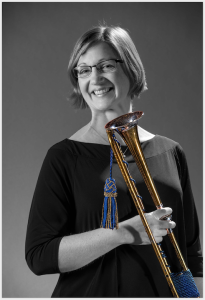




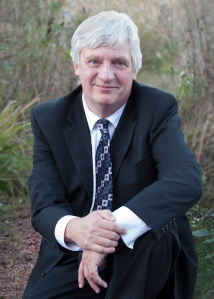
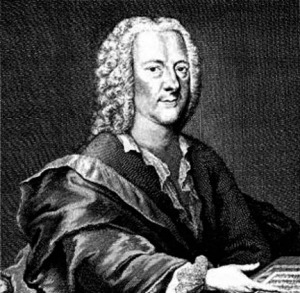
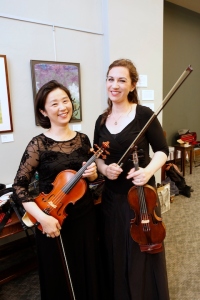


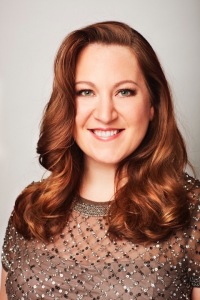
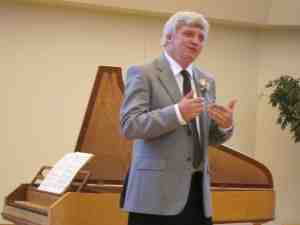







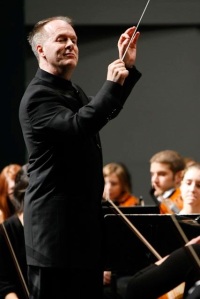

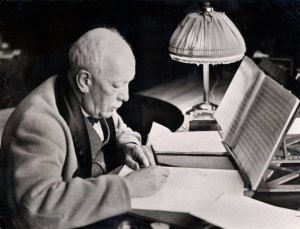



















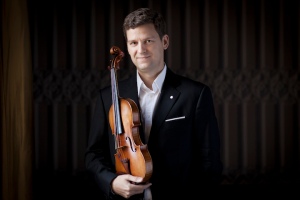




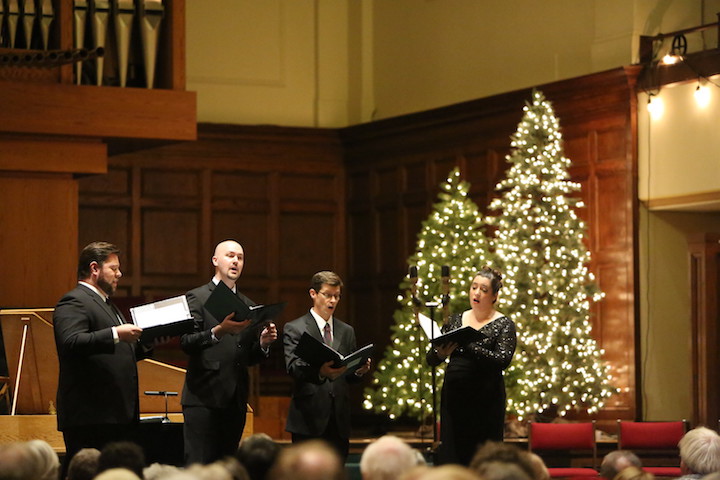

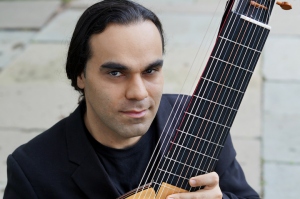
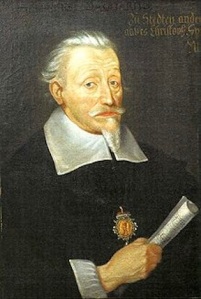
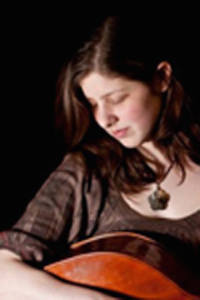
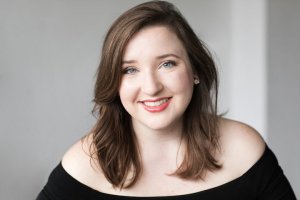
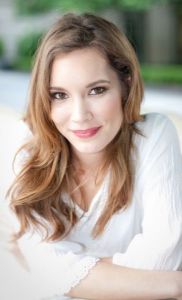
Today is the Winter Solstice. Here is a piece to make you look forward to longer days, warmth and the Summer Solstice next year
1 Comment
PLEASE HELP THE EAR. IF YOU LIKE A CERTAIN BLOG POST, SPREAD THE WORD. FORWARD A LINK TO IT OR, SHARE IT or TAG IT (not just “Like” it) ON FACEBOOK. Performers can use the extra exposure to draw potential audience members to an event. And you might even attract new readers and subscribers to the blog.
By Jacob Stockinger
Today – Monday, Dec. 21 — is the Winter Solstice, the longest night and shortest day of the year in the Northern Hemisphere. It arrives at 4:02 a.m. CST.
The Ear expects that Wisconsin Public Radio, among other media outlets, will be marking the event with traditional, often austere, winter music. That includes “Winter” from Vivaldi’s “The Four Seasons”; maybe some songs from Schubert’s “Winterreise” (Winter Journey); Peter Tchaikovsky’s “The Seasons” and “The Nutcracker”; and, of course, plenty of winter holiday music, including carols and the Baroque oratorios, cantatas and concertos by Bach, Handel, Telemann, Corelli and others.
But many people – strained by the coronavirus pandemic –are already eagerly looking forward to the days growing longer, which will culminate in the Summer Solstice at 10:31 p.m. CST on Sunday, June 21, 2021.
Who needs to celebrate the season’s cold and darkness? So The Ear thought that we could all use a little sonic sunlight, tonal warmth and musical hope, especially at the end of this Plague Year.
There are standards and favorites such as Mozart’s “Eine kleine Nachtmusik” and Vivaldi’s “Summer.”
But to The Ear that work that really lifts one’s spirits, and captures the kind of joyful abandon and youthful energy of the mid-summer event, complete with animal noises and romance, is the “Overture to a Midsummer Night’s Dream” by a 17-year-old Felix Mendelssohn (below).
You can hear it below in a YouTube performance by the Gewandhaus Orchestra of Leipzig conducted by the late, great German conductor Kurt Masur, whose son, Ken-David Masur, is the new music director and conductor of the Milwaukee Symphony Orchestra.
The Ear hopes you enjoy it.
What music would you like to hear or play to mark the Winter Solstice?
Leave a suggestion with your reason and, if possible, YouTube link in the Comment section.
The Ear wants to hear.
Share this:
Tags: #ALittleNightMusic, #AMIdsummerNight'sDream, #AntonioVivaldi, #ArcangeloCorelli, #BachCantatas, #BaroqueMusic, #BaroqueOratorio, #BlogPost, #BlogPosting, #CentralTime, #ChamberMusic, #ChoralMusic, #ChristmasConcerto, #ChristmasMusic, #ChristmasOratorio, #ClassicalMusician, #CoronavirusPandemic, #DanielHope, #EineKleineNachtmusik, #FacebookPost, #FacebookPosting, #FelixMendelssohn, #FranzSchubert, #GeorgeFridericHandel, #GeorgPhilippTelemann, #GewandhausOrchestra, #Handel'sMessiah, #HolidayMusic, #JacobStockinger, #Ken-DavidMasur, #KurtMasur, #LeipzigGermany, #MessiahOratorio, #MilwaukeeSymphonyOrchestra, #MusicDirector, #NorthernHemisphere, #PeterIlyichTchaikovsky, #PeterTchaikovsky, #PlagueYear, #StringMusic, #SummerSolstice, #TheEar, #TheFourSeasons, #TheSeasons, #TraditionalMusic, #VocalMusic, #WilliamShakespeare, #WinterJourney, #WinterSolstice, #WisconsinPublicRadio, #WolfgangAmadeusMozart, #YouTubevideo, A Little Night Music, A Midsummer Night's Dream, abandon, animal, Antonio Vivaldi, Arcangelo Corelli, arrive, Arts, audience, austere, Bach, Baroque, Baroque music, blog, Cantata, capture, Carol, celebrate, Central Time, Chamber music, choral music, Christmas Concerto, Christmas music, Christmas Oratorio, Classical music, classicalmusic, cold, comedy, comment, composer, concerto, conductor, Corelli, coronavirus, culminate, darkness, day, December, Early music, Eine Kleine Nachtmusik, energy, enjoy, event, expect, Facebook, Facebook post, Facebook posting, favorite, Felix Mendelssohn, forward, Franz Schubert, Georg Philipp Telemann, George Frederic Handel, German, Germany, great, Handel, heavy lifting, hemisphere, holiday music, hope, Jacob Stockinger, Johann Sebastian Bach, joyful, June, Ken-David Masur, Kurt Masur, late, Leipzig, Leipzig Gewandhaus Orchestra, like, link, longer, Madison, mark, media, Mendelssohn, Messiah, midsummer, Milwaukee, Milwaukee Symphony Orchestra, Monday, Mozart, MSO, Music, Music director, musical, night, noises, Northern Hemisphere, oratorio, Orchestra, outlet, Overture, pandemic, performer, Peter Ilyich Tchaikovsky, Peter Tchaikovsky, plague, Plague Year, play, post, posting, Radio, reader, Romance, Schubert, Season, Shakespeare, share, short, shorter, solstice, songs, sonic, spirit, standard, strain, string music, subscriber, summer, Summer solstice, Sunday, sunlight, symphony, tag, Tchaikovsky, teenager, Telemann, The Ear, The Four Seasons, The Seasons, today, tonal, traditional, United States, use, Vivaldi, vocal music, warmth, we, winter, Winter Journey, winter solstice, Winterreise, Wisconsin, wisconsin public radio, Wolfgang Amadeus Mozart, work, year, youthful, YouTube